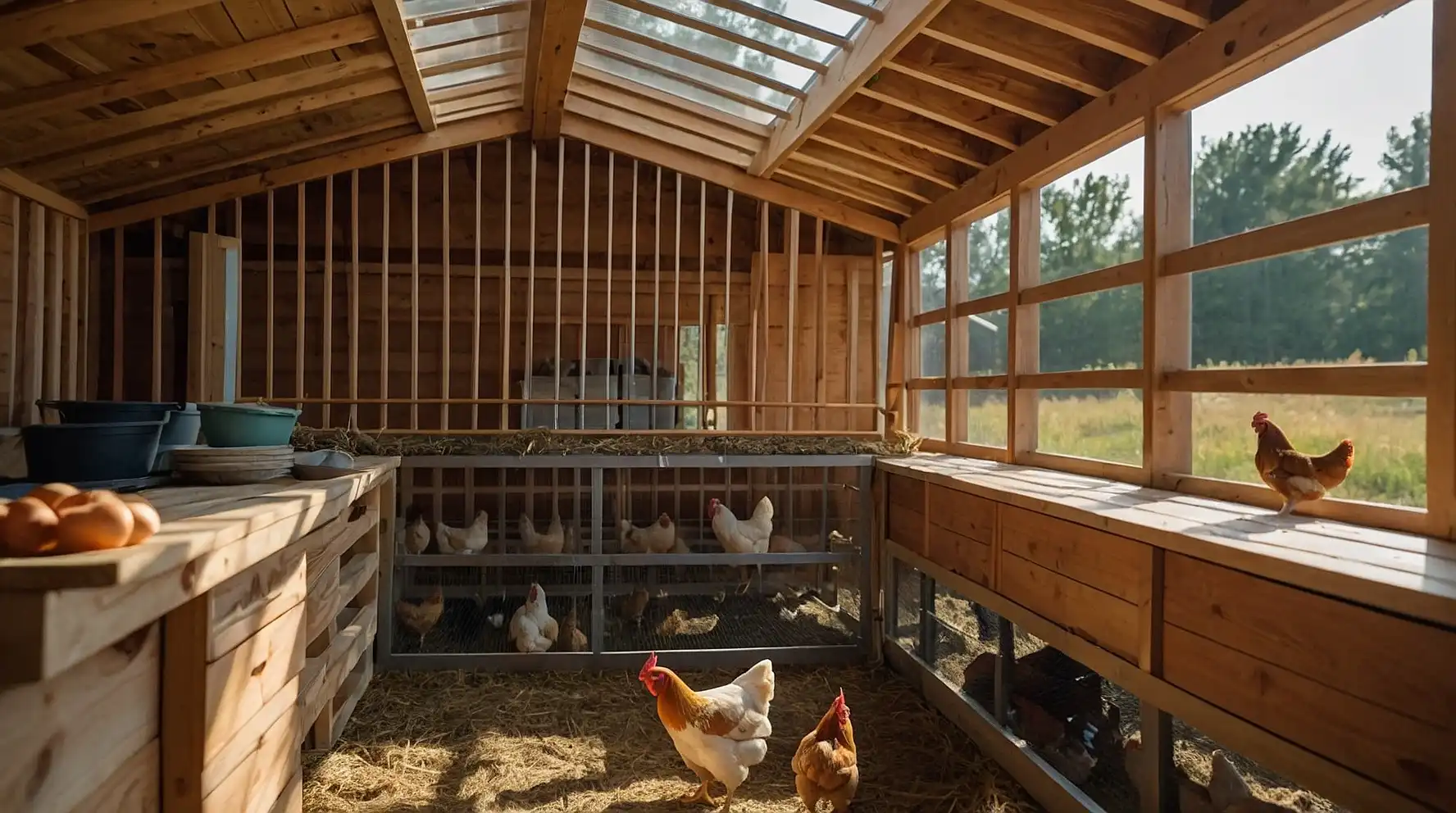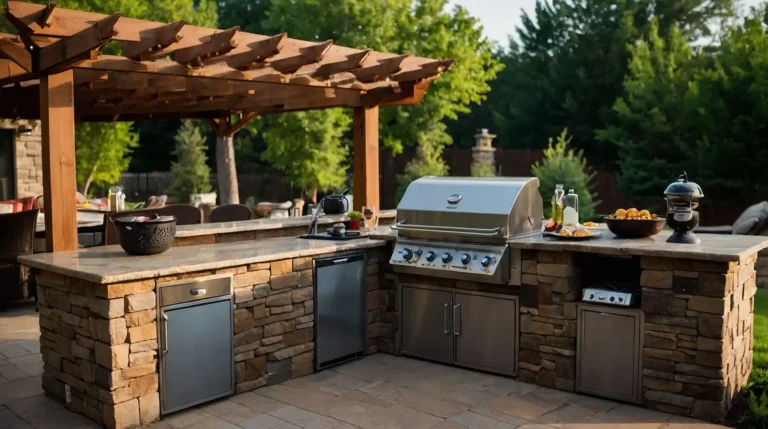21 Innovative Inside Chicken Coop Designs for Happier, Healthier Hens
The interior design of your chicken coop significantly impacts your flock’s health, egg production, and overall happiness.
Modern coop interiors combine practical functionality with smart design elements that make maintenance easier while keeping your chickens comfortable and secure.
Whether you’re building from scratch or upgrading an existing structure, these innovative inside coop designs will transform your chicken housing from merely functional to exceptionally well-planned.
1: Removable Droppings Trays
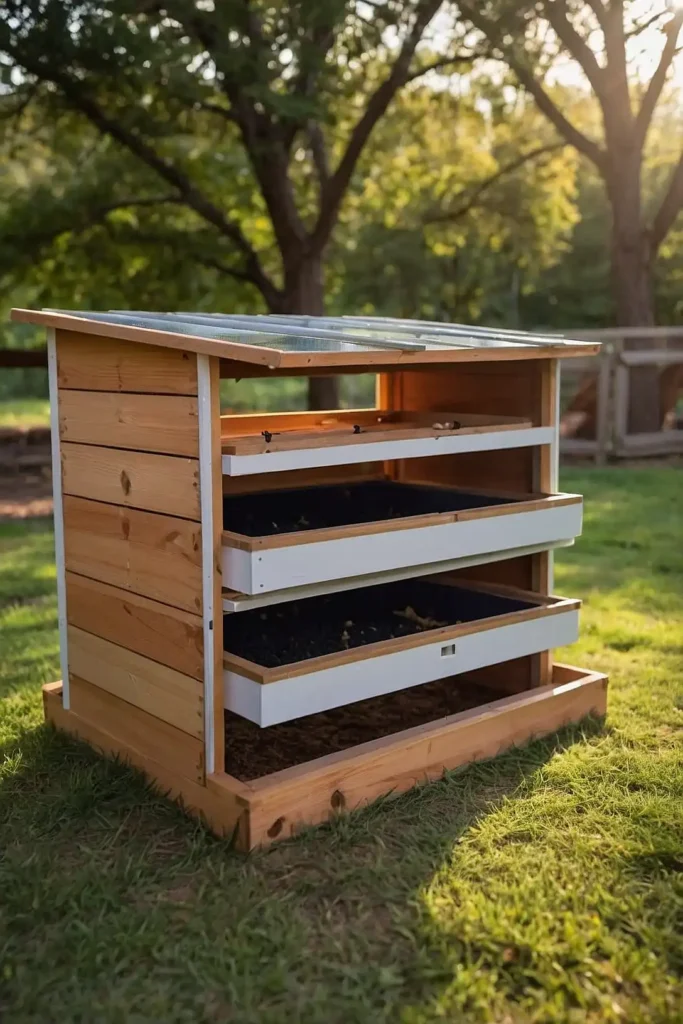
Install sliding trays beneath roosting bars to collect droppings for quick and efficient cleaning without disturbing your flock.
Construct these from sheet metal or plastic cutting boards for durability and easy washing, with handles for convenient removal.
This simple addition dramatically reduces deep-cleaning frequency and improves air quality by allowing daily waste removal.
2: Vertical Herb Wall Garden
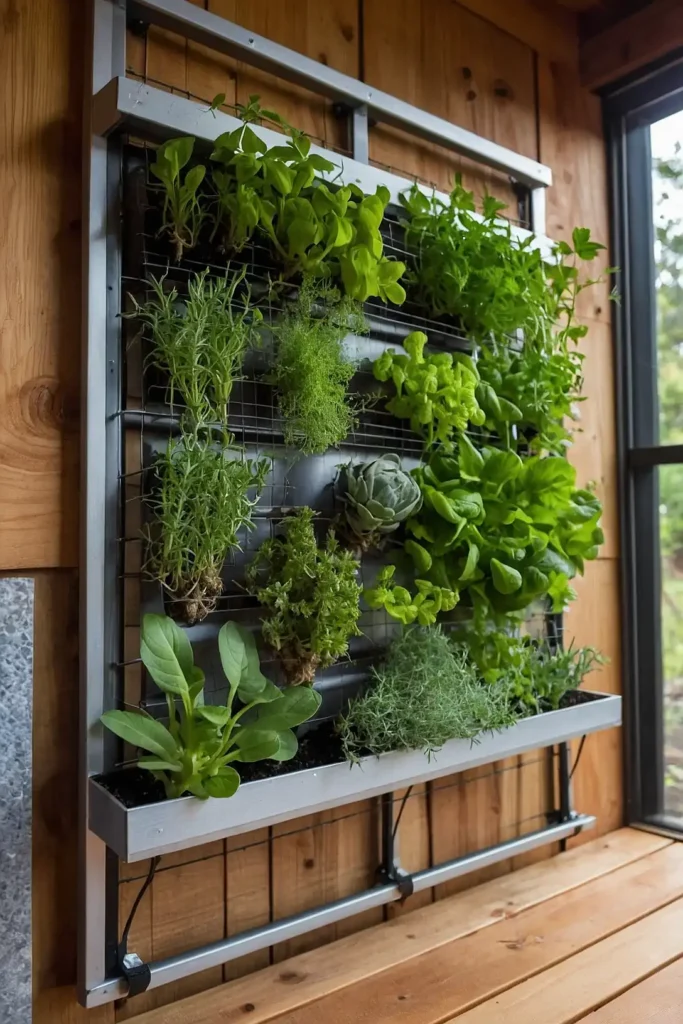
Mount a living herb wall inside your coop using gutters or pocket planters filled with chicken-friendly herbs like lavender and mint.
These aromatic plants naturally repel insects, reduce odors, and provide health benefits when chickens peck at the fresh greenery.
Position your herb wall near ventilation to maximize fragrance circulation while ensuring plants receive adequate light for growth.
3: Dutch Door Nesting Box Access
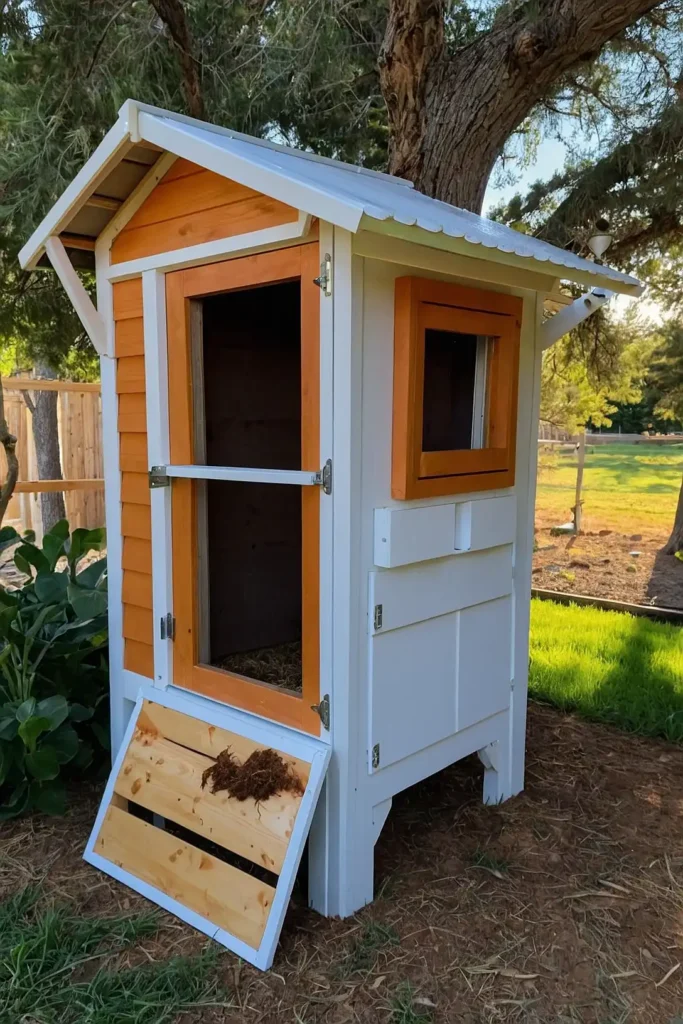
Design external-access nesting boxes with Dutch-style split doors for egg collection without entering the coop.
The top door opens for quick daily gathering, while both doors open for full access during cleaning and maintenance.
Add hinged roofs to each nesting box with props to hold them open during thorough cleaning sessions or bedding replacement.
4: Solar-Powered Ventilation System
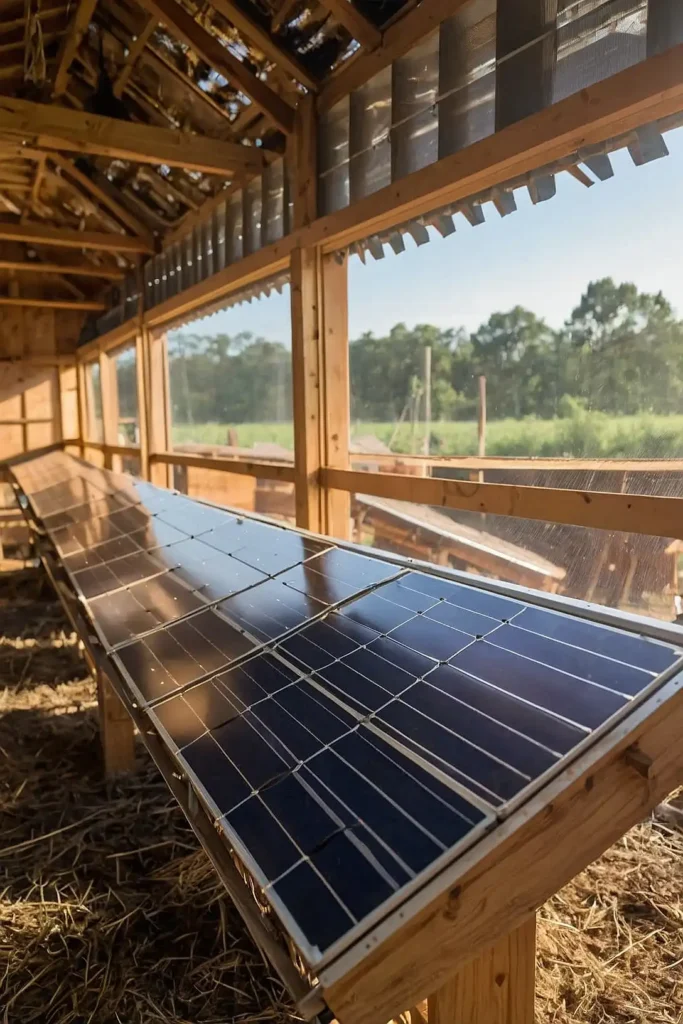
Install small solar panels connected to automated vent fans that regulate temperature and humidity inside your coop.
These systems operate independently of electrical hookups, ideal for remote coops while ensuring consistent air quality year-round.
Program thermostatic controls to activate fans when temperatures rise, preventing heat stress during summer months.
5: Modular Roosting Bars
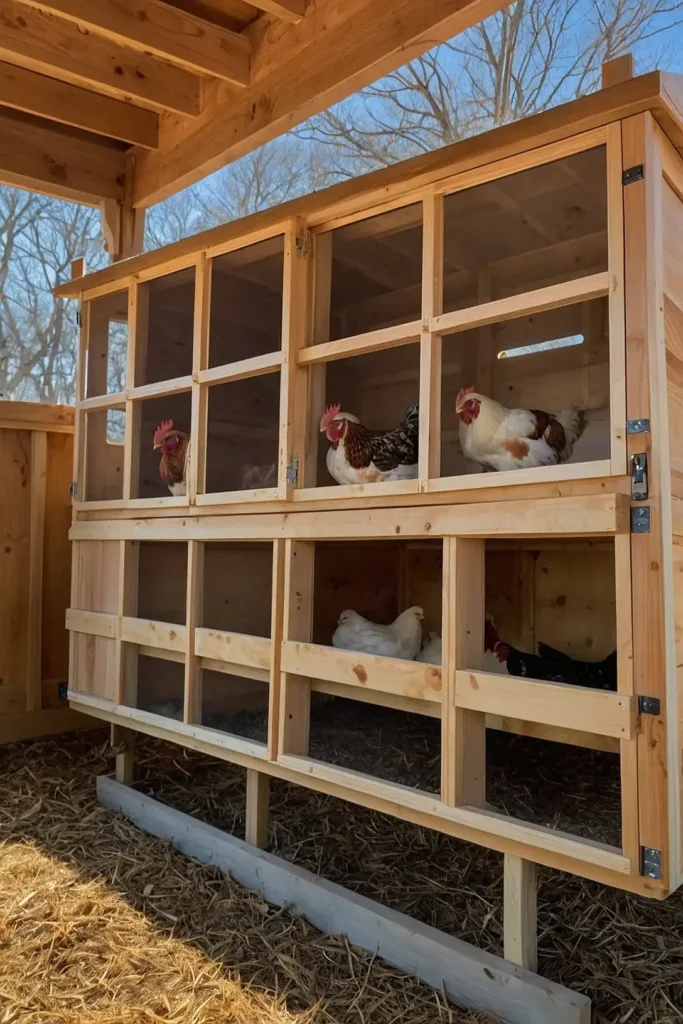
Build removable roosting bar sections that lift out completely for thorough cleaning and parasite control.
Design bars with square edges rather than round for better grip and natural nail filing as chickens perch.
Stagger heights to create a natural roosting ladder that minimizes conflict during evening settling and accommodates your flock’s natural pecking order.
6: Recycled Pallet Divider Walls
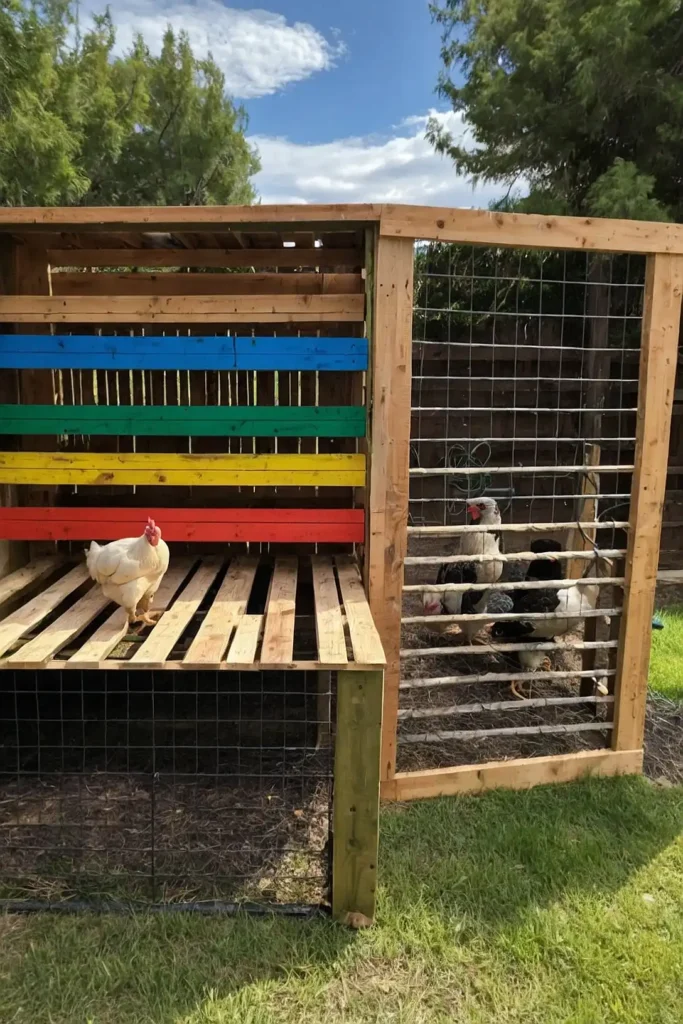
Repurpose wooden pallets to create movable interior walls that divide your coop into functional zones for different activities.
Sand rough edges smooth and seal with poultry-safe finishes to prevent splinters or respiratory irritation from raw wood.
These flexible barriers establish separate areas for feeding, dust bathing, and socialization while allowing reconfiguration as your flock’s needs change.
7: Integrated Feed Storage Solutions
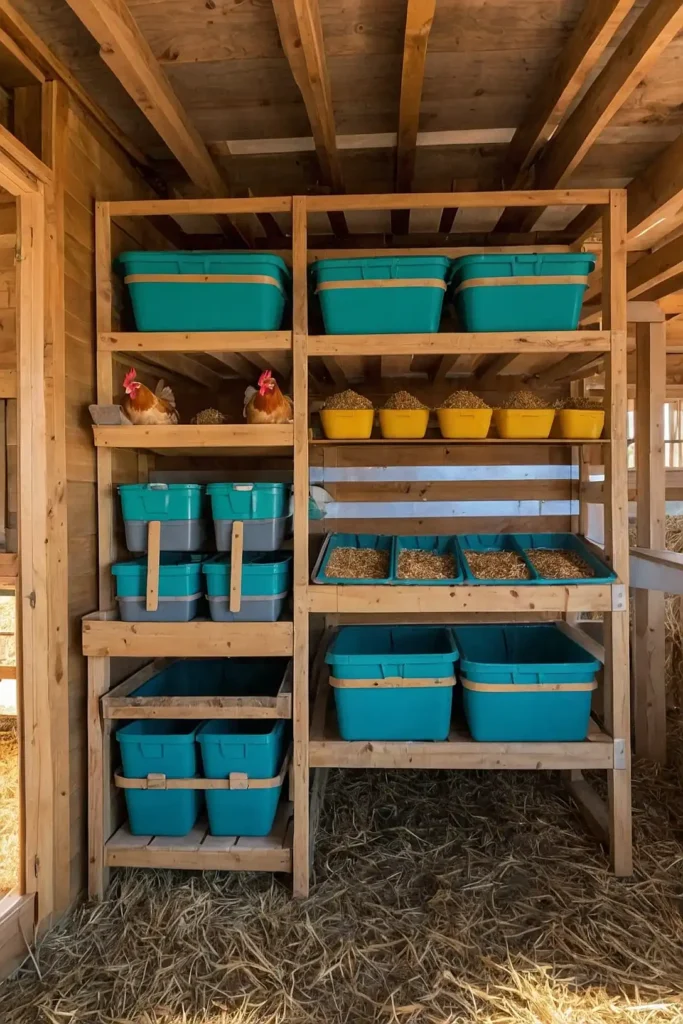
Build sealed feed storage containers directly into your coop’s interior walls for immediate access during feeding time.
Design hoppers with automatic dispensing mechanisms that release measured amounts into troughs below when opened.
This rodent-proof system keeps food fresh longer while eliminating the need to carry heavy bags across your yard for daily feeding.
8: Deep Litter Management System
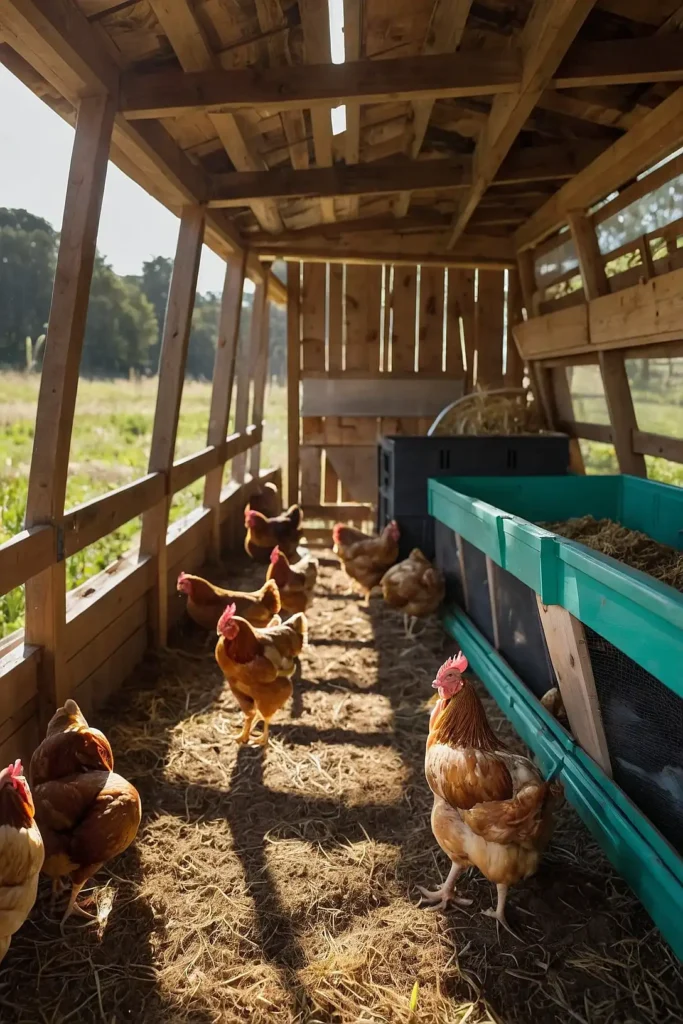
Design your coop floor with a 12-inch recess to accommodate the deep litter method for natural composting and heat generation.
Install a small access door at ground level for periodic removal of the lowest layer when the bedding reaches maximum depth.
This system reduces cleaning frequency while providing natural warmth during winter through bacterial decomposition of bedding and droppings.
9: Rainwater Collection Drinking System
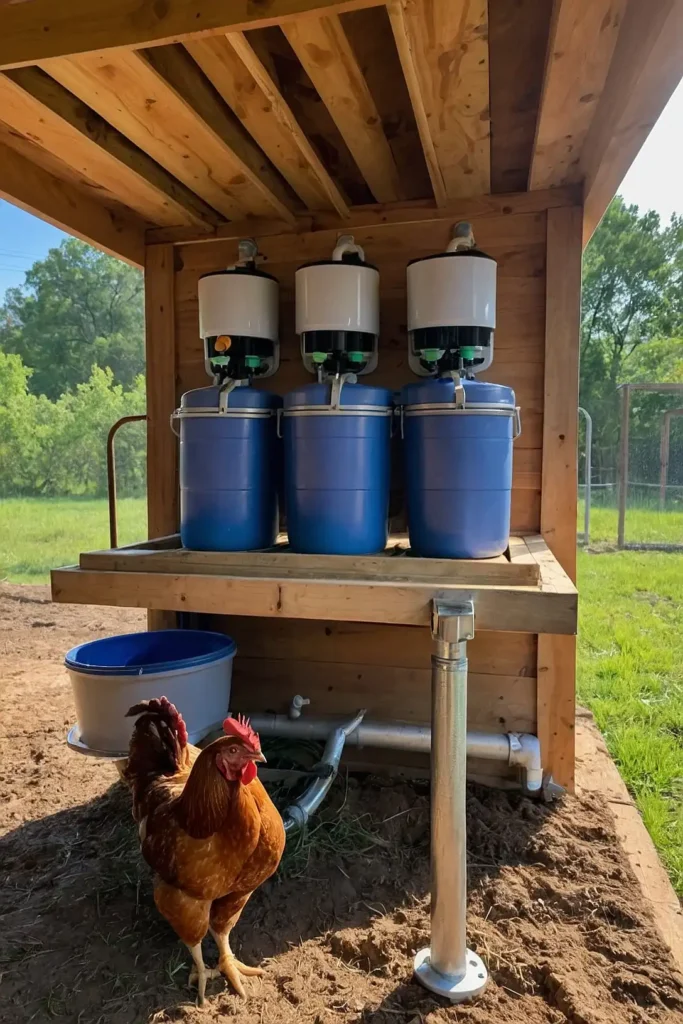
Integrate a rainwater harvesting system that channels roof runoff into filtered storage connected to interior drinking nipples.
Mount nipples at appropriate heights for different chicken breeds, with catch trays underneath to prevent wet bedding.
This self-replenishing water system reduces daily chores while ensuring your flock always has access to fresh water.
10: Insulated Pop Door Automation
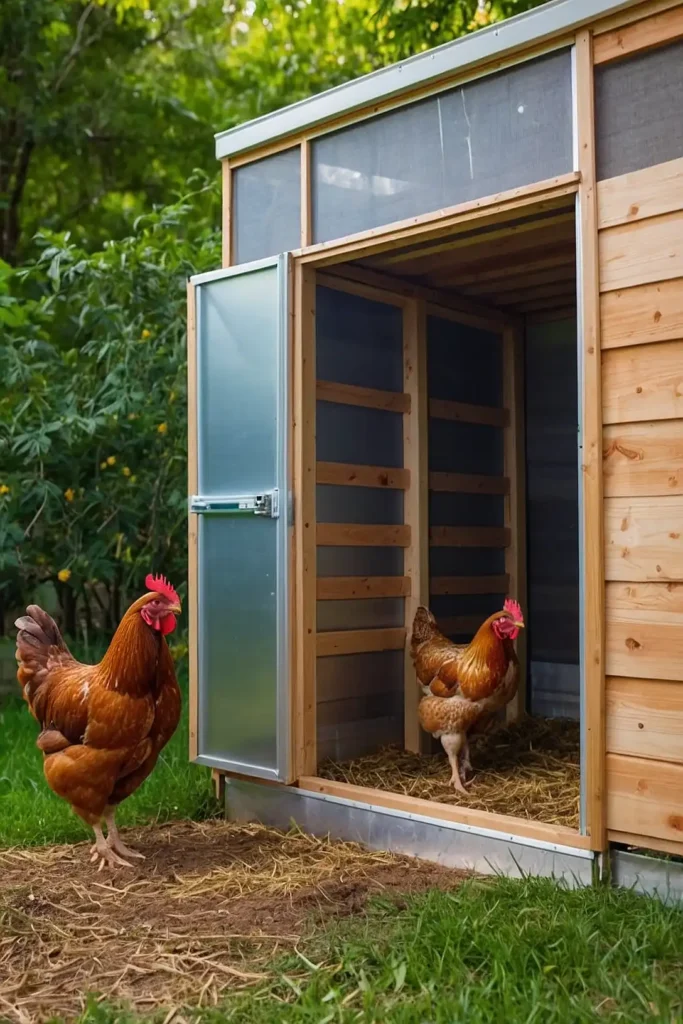
Install an insulated automatic pop door with programmable timers and light sensors for seasonal adjustment.
The insulated design prevents drafts and heat loss during winter months while maintaining security against predators.
Add manual override capabilities for unexpected weather events or times when you need to adjust your flock’s schedule.
11: Dust Bath Stations With Observation Windows
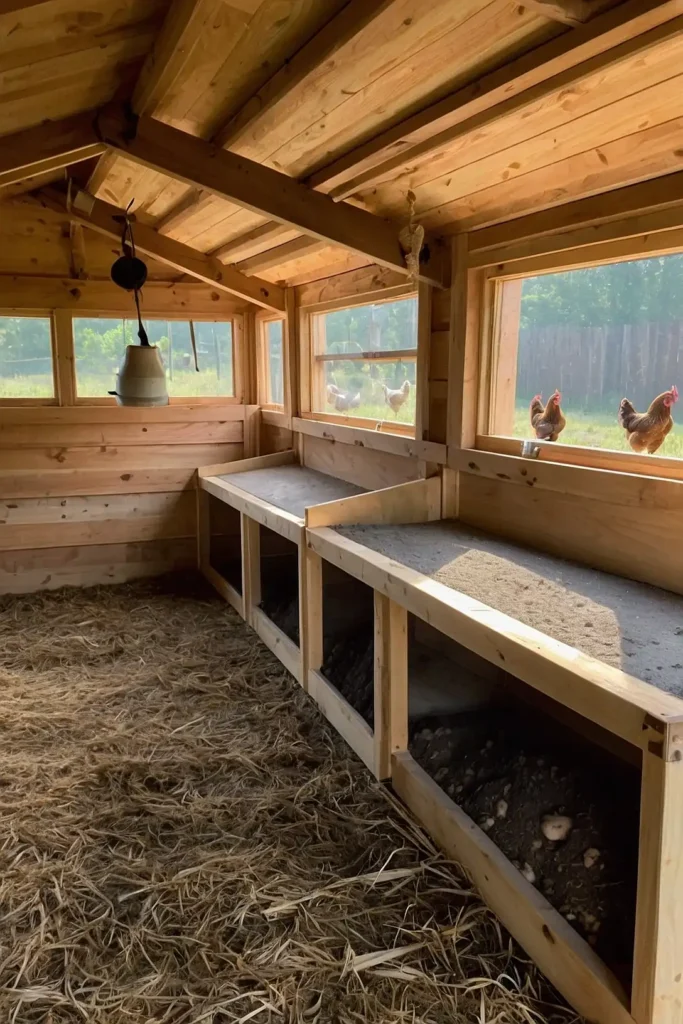
Create designated dust bathing areas using concrete mixing tubs filled with sand, wood ash, and food-grade diatomaceous earth.
Position these stations beneath windows to allow natural light for parasite control while providing entertainment for coop-side chicken watching.
Install hinged covers to protect the dust mixture during wet weather and prevent bedding contamination from enthusiastic bathing sessions.
12: Sloped Interior Floors
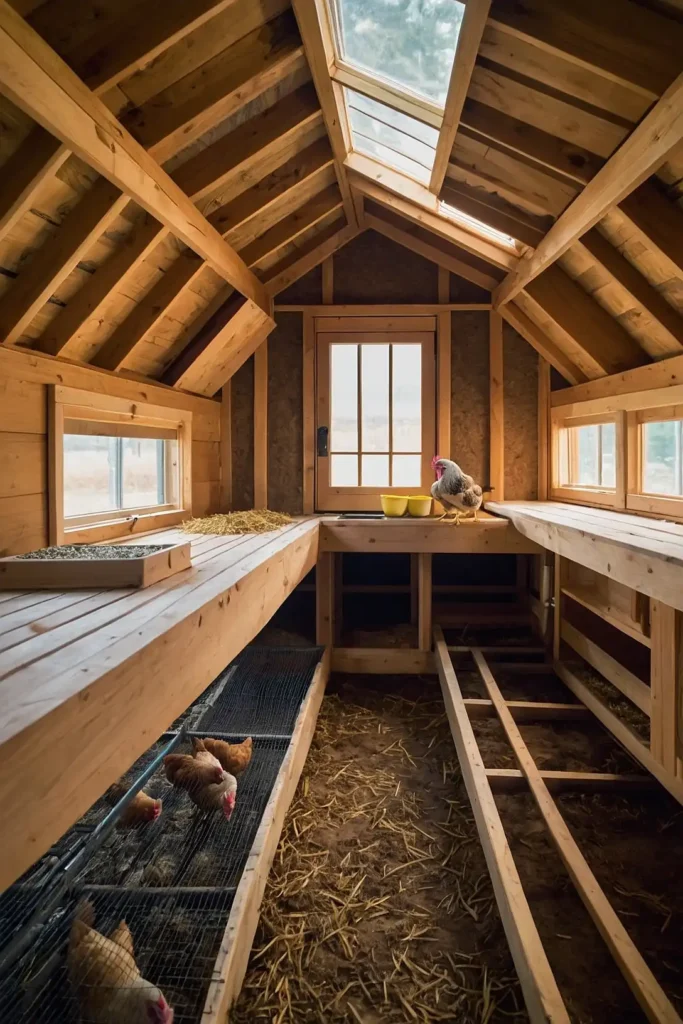
Design your coop floor with a slight slope (approximately 1-inch drop per 8 feet) toward the cleaning access door.
This subtle grade allows waste and water to naturally flow toward the removal point during hose-down cleaning sessions.
Add textured concrete or rubber matting over the slope to provide secure footing for your chickens while maintaining the drainage benefit.
13: Integrated Brooding Corner
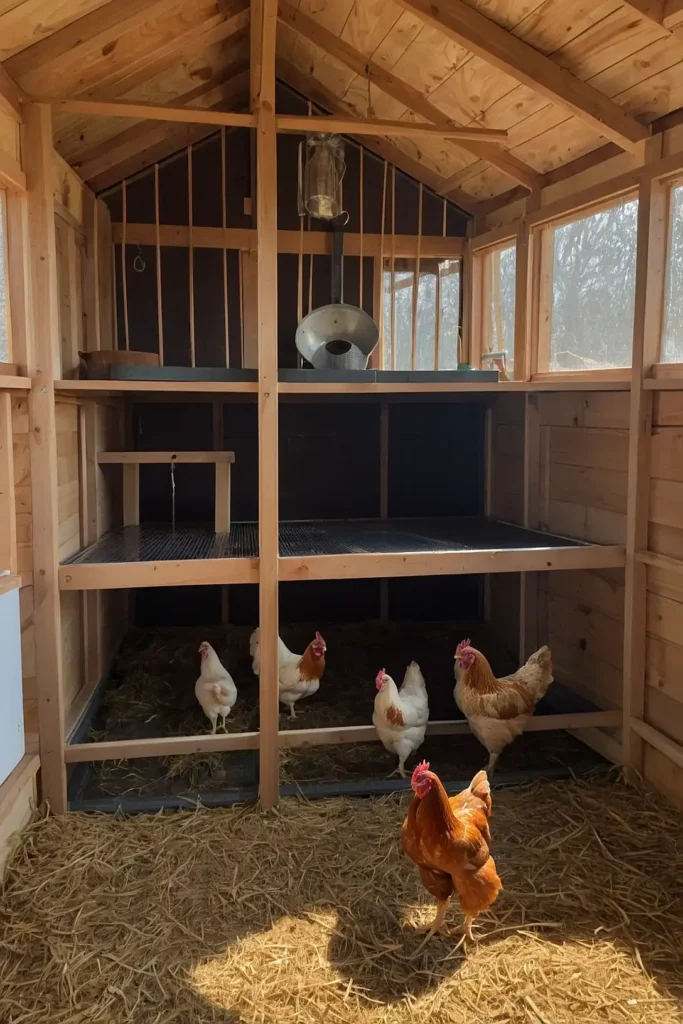
Designate a separate corner of your coop with extra insulation and a low ceiling for natural brooding activities.
Install independent heat sources and soft bedding to create an inviting environment for setting hens and their chicks.
Add removable dividers that can section this space completely when needed or open it to general use during non-brooding seasons.
14: Hidden PVC Pipe Storage
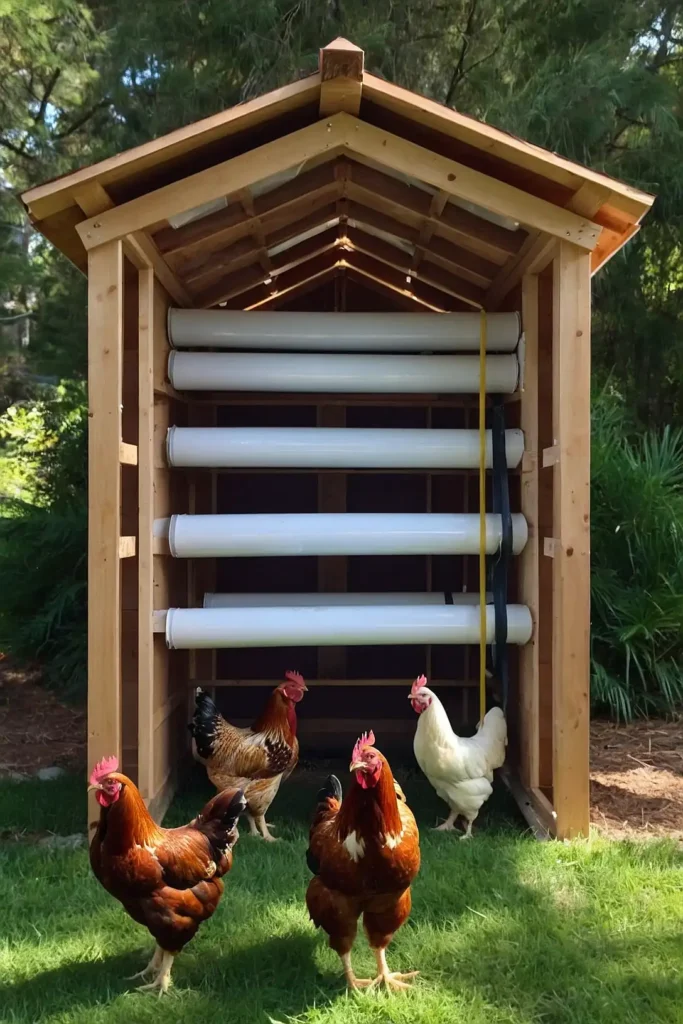
Utilize the space inside your coop walls by installing large-diameter PVC pipes as storage tubes for supplies.
Mount these horizontally with screw-on end caps for dust-free storage of medications, supplements, and small tools.
Label each tube clearly and position at eye level for quick identification when you need specific items during coop maintenance.
15: Hanging Vegetable Basket System
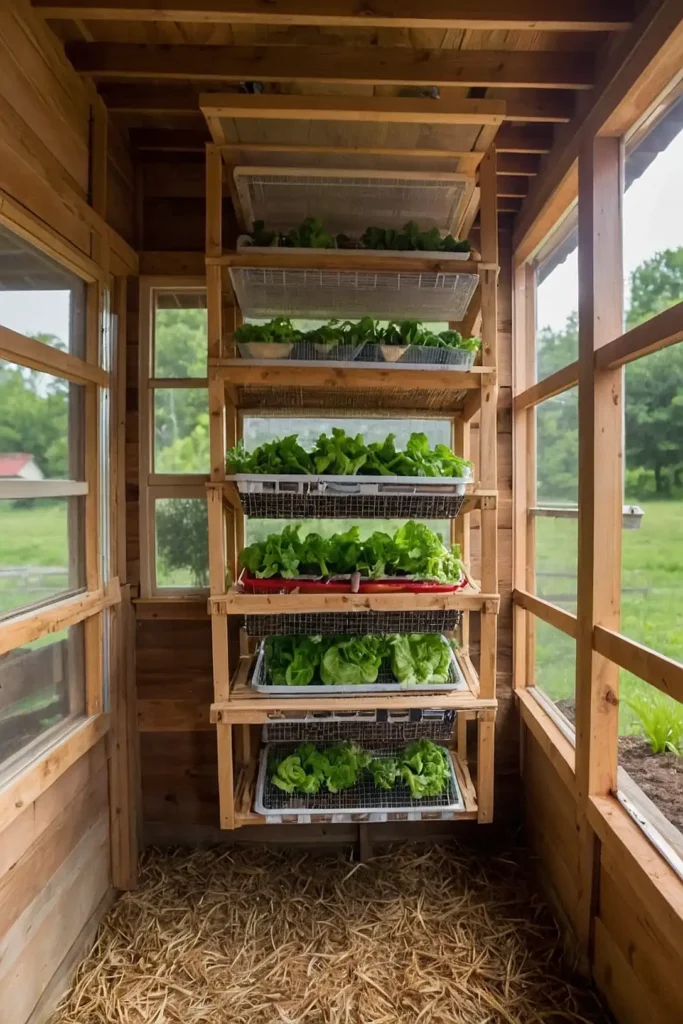
Install a series of hanging baskets from the ceiling to provide fresh greens and vegetable treats without floor space consumption.
Use chains with adjustable lengths to raise baskets when chickens need more overhead room or lower for easy access to treats.
This system keeps produce off the ground, reducing waste and encouraging natural jumping and foraging behaviors for better health.
16: LED Lighting Program
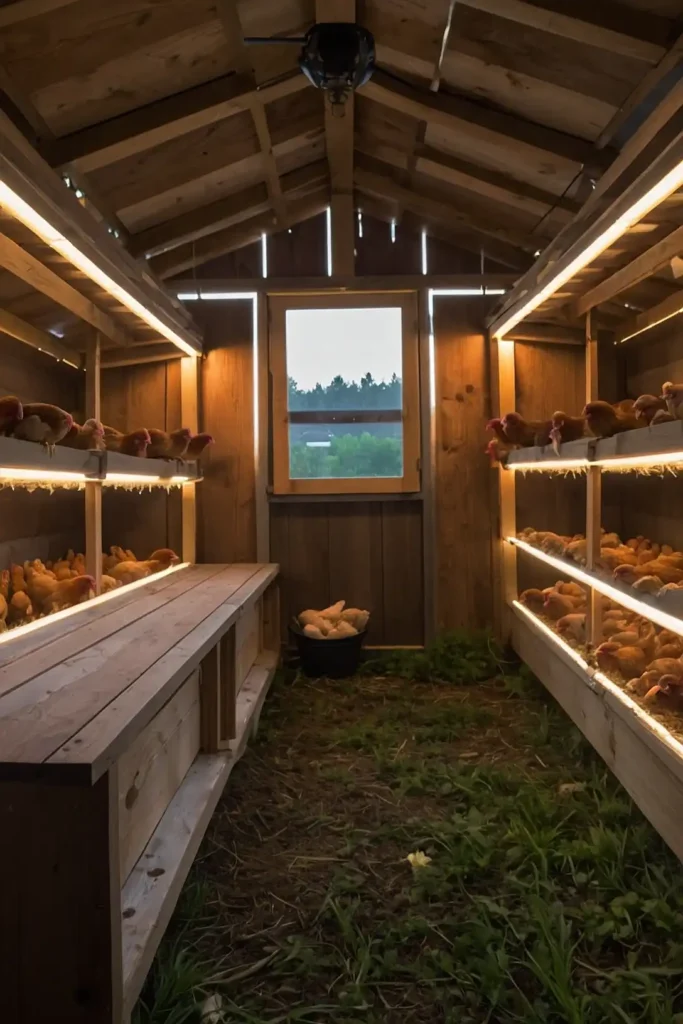
Install energy-efficient LED lighting with programmable timers to optimize egg production during shorter winter days.
Select fixtures with red-spectrum options for evening lighting that calms chickens while allowing you to check on them after dark.
Mount light fixtures on separate circuits to create zones that mimic natural dawn and dusk transitions for less stressful environments.
17: Nest Box Privacy Curtains
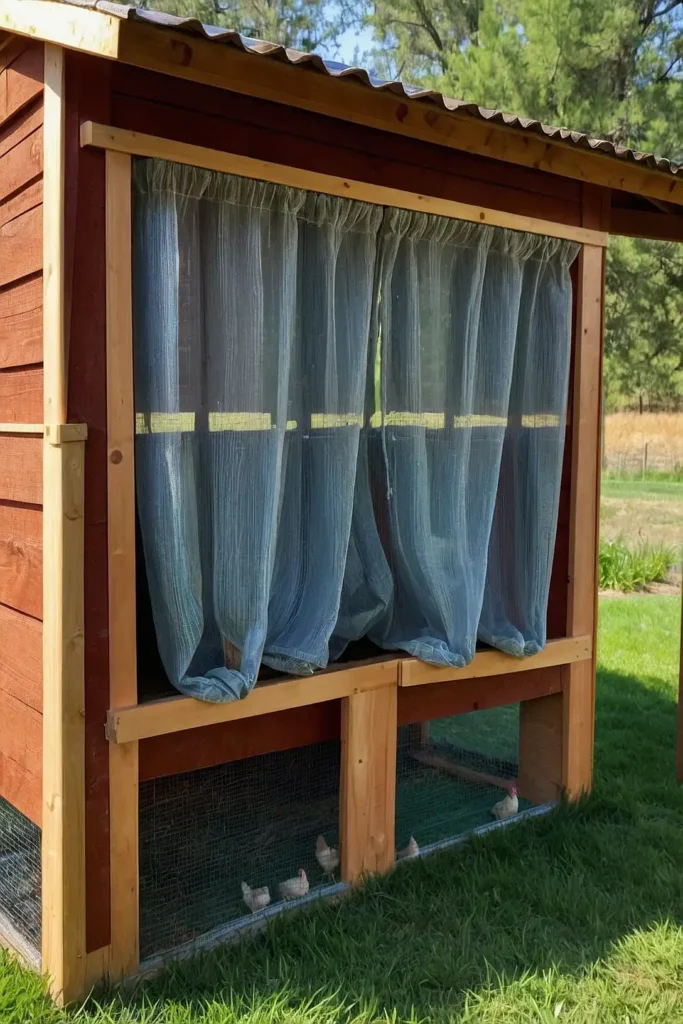
Add fabric curtains to the entrances of your nesting boxes to create darker, more private laying environments.
Use heavy-duty, washable materials that can withstand pecking while providing the seclusion that encourages regular egg laying.
Choose darker colors that hide stains and dirt between washings, with detachable design for easy removal during clean-outs.
18: Multi-Level Perching Playground
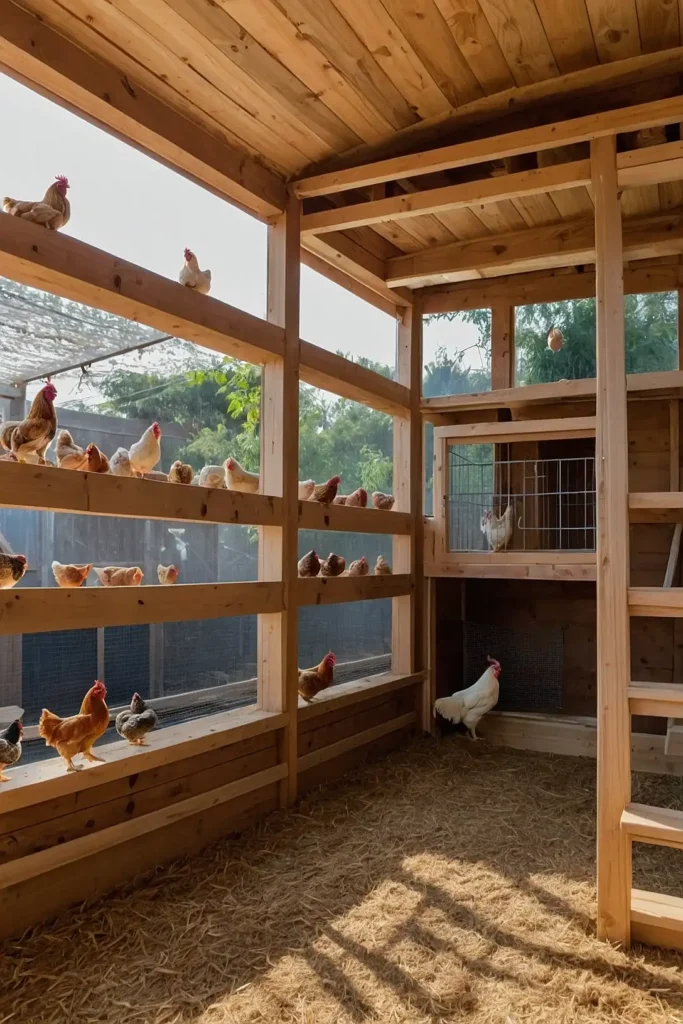
Construct a series of connected platforms at various heights throughout unused vertical space in your coop.
Connect these levels with ramps and ladders to encourage exercise and provide entertainment during confined winter days.
Position these elements away from feeding and nesting areas to prevent droppings contamination while maximizing usable space.
19: Embedded Thermometer and Humidity Gauge
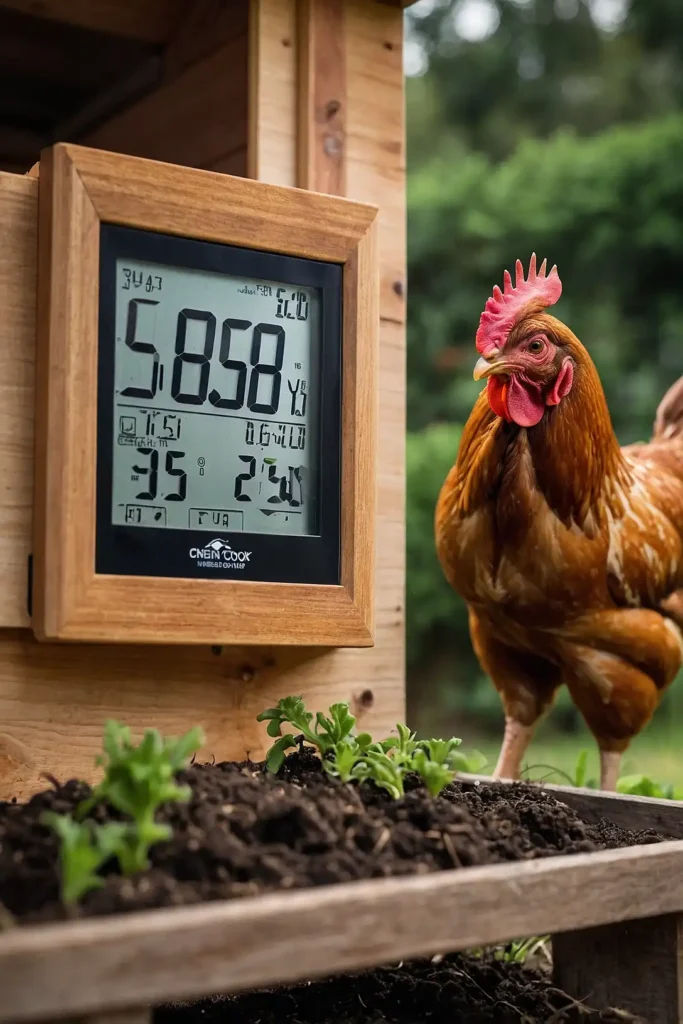
Install digital temperature and humidity monitors in multiple coop zones with exterior readouts for easy checking.
Position sensors at both chicken height and near the ceiling to understand the gradient your birds experience.
This monitoring system helps you make informed ventilation decisions while tracking seasonal patterns affecting your flock’s comfort.
20: Under-Roost Composting Drawers
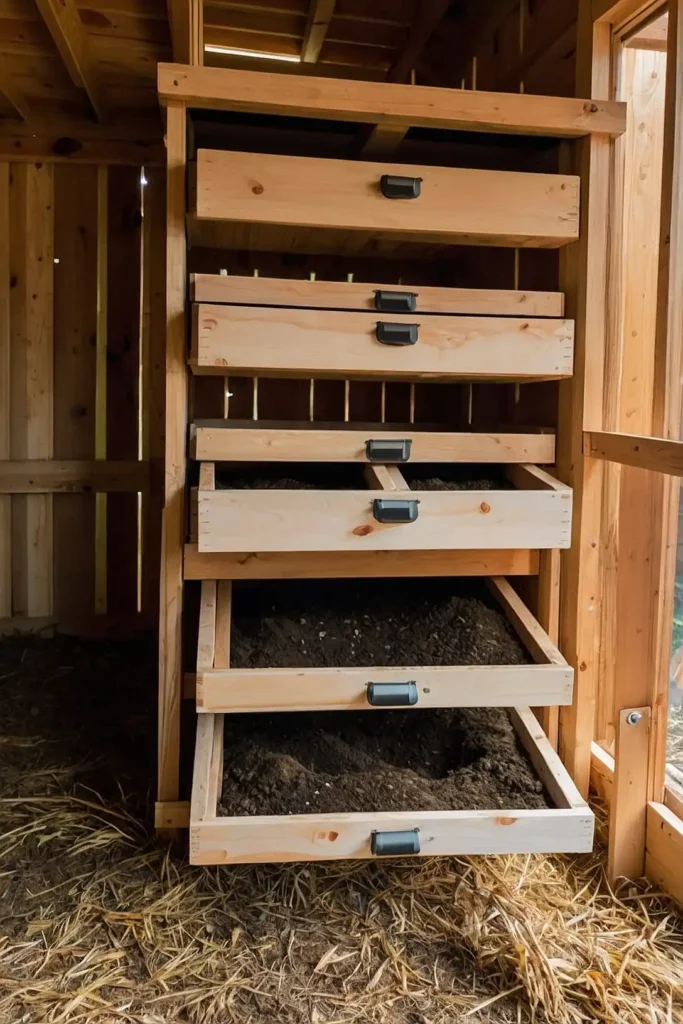
Design your roosting area with pull-out composting drawers that contain carbon-rich materials like pine shavings or dried leaves.
Droppings fall directly into these materials, creating ready-to-use compost that requires minimal additional processing.
Install handles and wheel systems for smooth operation, even when drawers contain several days’ worth of enriched compost material.
21: Indoor Winter Greens Production
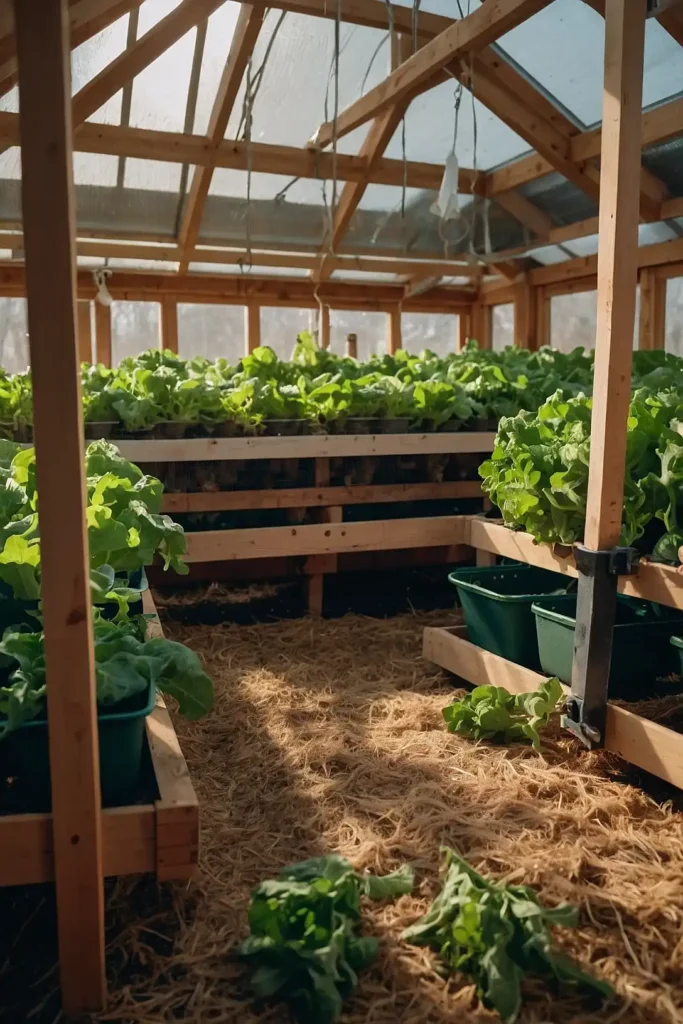
Dedicate a sunny corner of your coop to growing trays of wheatgrass, sprouts, or microgreens for fresh winter forage.
Install grow lights on timers above the growing station to supplement natural light during shorter days.
This indoor garden provides nutritional supplementation during months when outdoor foraging becomes limited or impossible.
Conclusion
Thoughtful interior coop design significantly improves your chickens’ quality of life while making your caretaking duties more efficient.
Implement these innovative ideas to create a functional, healthy environment that benefits both you and your feathered friends.

